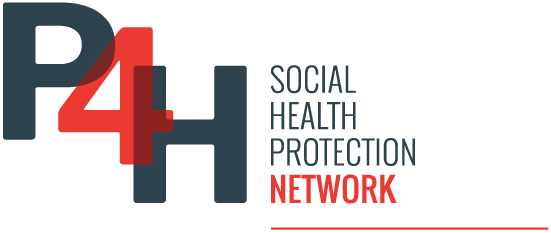Dredge, R., Nuevo, C. E., Paterno, A. R. (2021)
The Philippine Universal Health Care (UHC) Law of 2019 introduced system-level reforms on health financing, particularly for the provider payment mechanisms of the Philippine Health Insurance Corporation (PhilHealth). PhilHealth is the implementer of the National Health Insurance Program, with the goal of ensuring financial risk protection for all Filipinos when accessing the health care they need. The recently passed Philippine UHC Law aims to revitalize and strengthen PhilHealth as part of the overall agenda of health systems reform. In order to become the national strategic purchaser of health services, PhilHealth plans to shift its provider payment mechanism towards a blend of diagnosis-related groups (DRGs) and prospective global budget payments, supported by proper costing methodologies and explicit co-payment rules. Primary care is also a key area of focus – the development of a comprehensive outpatient benefit package will have gatekeeping and patient navigation features to integrate care across a contracted network of health care providers. Through these provider payment reforms, PhilHealth aims to improve cost-effective purchasing of health services that would lead to better health outcomes.
These complex and interlinked reforms require careful coordination across several policy strands and it is essential that they coordinate their research, data, technical and policies activities to facilitate true integrated care. Costing, DRGs, global budget payment, primary care, and co-payments all work together as distinct but complementary portfolios of the provider payment reform. This scale of policy reform has not been pursued in recent years by PhilHealth. In fact, previous reforms of provider payment (such as bundled payments for outpatient and catastrophic conditions, or the shift from fee-for-service to the case-based payments through the All Case Rates) were introduced separately and individually. Simultaneously setting into motion changes across different and interconnected facets of provider payment requires significant technical work, analysis, and policy development, as well as coordination with internal and external stakeholders. Understandably, this presents a formidable challenge for PhilHealth, and much help is needed to carry things forward.
At the same time as stewarding these reforms, PhilHealth has to contend with daily operational matters, including persisting issues of the prevailing payment system. PhilHealth has faced heavy criticism over the years for inefficient payment mechanisms, inadequate package rates, lack of transparency, and even poor technical capacity to fulfill its function. This has derailed the full materialization of its mandate to ensure financial risk protection. In 2019, the share of PhilHealth in the current health expenditure (CHE) of the country remains low at only 18.8%, while out-of-pocket spending continues to be the primary source of financing at 47.9% of CHE. While the UHC Law provides the policy direction to revitalize PhilHealth’s financing mechanisms, this will not happen immediately. The current system must still be developed, and its challenges and shortfalls demand attention.
ThinkWell provided support to PhilHealth in the form of learning sessions that allowed technical teams and senior figures from many stakeholders to be introduced to global best practices, and to discuss ongoing work with subject matter experts. These one-and-a-half hour learning sessions were either of two platforms: 1) conceptual discussion with PhilHealth on provider payment and global best practices which would aid the reforms; or 2) a policy consultation for PhilHealth where they present and solicit feedback on ongoing analytics and draft policies on the provider payment reforms. Though the nature and subject of each session varied, the main objective remains the same: to provide a platform for technical discourse to allow PhilHealth to benchmark and review their current courses of action and policy directions with that of global best practices. A total of around 60 technical staff at the central and regional offices, as well as representatives from senior management (Senior Managers; Regional and Senior Vice Presidents) participated in the sessions that resulted in holistic discussions touching on high-level policy questions, as well as operational and implementation considerations.
The learning sessions served as an avenue to brainstorm and assess policy and implementation options for provider payment, and were documented through technical briefs that are later on summarized in a monograph. All technical insights which arose from the discussions were documented and developed into post-session technical briefs and disseminated to all participants. A monograph that assembles all key concepts, discussion points, and learning insights was also put together as the final product, intended to be a resource containing key concepts on health financing, specifically in the context of the Philippine health care system. The full monograph can be accessed here. This monograph will allow PhilHealth to have a continuing reference for all future actions and policies on provider payment reforms.
The learning sessions resulted in positive outcomes and concrete actions adopted by PhilHealth through their official activities and policy drafts. These include (1) conduct of stakeholder consultation and results dissemination with pilot health care provider on the costing framework and methodology, (2) early linking of the anticipated costing results with the development of the DRGs and co-payments, (3) implementation of facility-based global budget payment as an interim strategy prior to full contracting of health care provider networks, (4) blended payments as either interim or final payment designs, and (5) designing of global budget mechanism supported by clear end-goals and governance mechanisms to facilitate the transition. These actions taken by PhilHealth highlight the immediate value and impact of the insights generated during the learning sessions.
References
- Cabalfin MR. 2016. “Health Financing for the Poor in the Philippines: Final Report,” Discussion Papers DP 2016-37, Philippine Institute for Development Studies.
- Congress of the Philippines. 1995. Republic Act No. 7875. An Act Instituting A National Health Insurance Program For All Filipinos And Establishing the Philippine Health Insurance Corporation for the Purpose.
- Congress of the Philippines. 2012. Republic Act No. 10606. An Act Amending Republic Act No. 7875, Otherwise Known as the “National Health Insurance Act of 1995”, As Amended, And For Other Purposes.
- Congress of the Philippines. 2019. Republic Act No. 11223. An Act Instituting Universal Health Care for All Filipinos, Prescribing Reforms in the Health Care System, and Appropriating Funds Therefor.
- Picazo OF, Ulep VGT, Pantig IM, and Ho BL. 2015. A Critical Analysis of Purchasing of Health Services in the Philippines: A Case Study of PhilHealth. Philippine Institute for Development Studies.
- Philippine Statistics Authority. 2020. Health Spending Grew by 10.9 Percent in 2019. https://psa.gov.ph/pnha-press-release/node/163258. Accessed Apr 2021.


